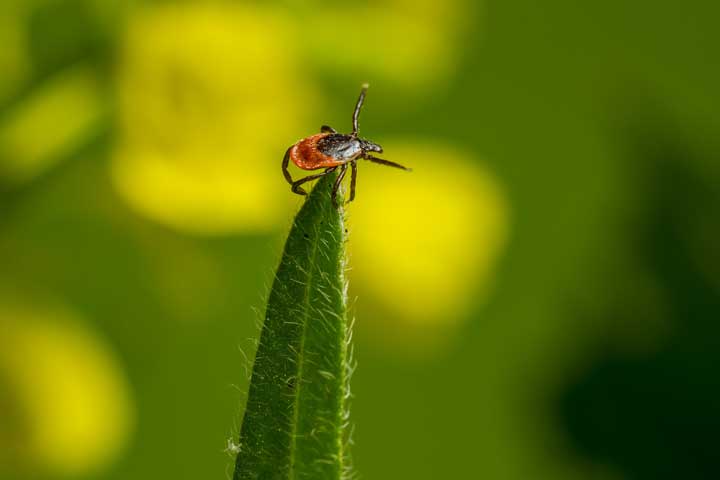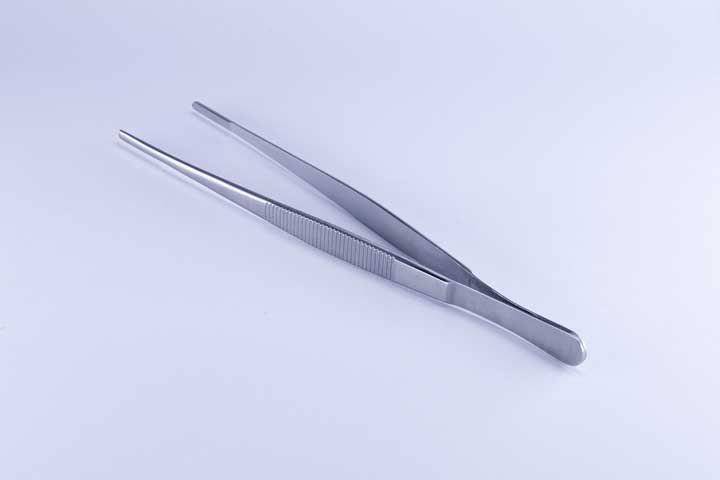If you enjoy the great outdoors and going on woodland hikes like I do, it’s likely you have discovered a tick or two clinging to your skin from time to time. These tiny bloodsuckers also attack pets, and they can be dangerous to their health—and ours. To protect ourselves, we need to know exactly how to remove ticks, what the risks of bites are and how to protect from ticks responsibly and safely. In this short guide, we will address these key issues and more.
What Exactly are Ticks?
Ticks are small arachnids of the superorder Parasitiformes and the subclass Acar. They can be the size of a pinhead and are typically 2 to 5 mm in length. These external parasites are more common during warmer months.
Ticks literally survive by freely sucking blood after attaching themselves to the skin of mammals, amphibians, reptiles, and birds. It’s important to remember that ticks can attach to people, posing health risks for us in addition to animals.

When and Where Ticks are Most Commonly Present
Again, warmer weather months such as those in spring and summer are when ticks dominate certain landscapes. Their preference tends to be hanging out in tall grass, thickets and neglected backyards.
Don’t think for a minute that ticks can’t also begin invading your yard from other zones, especially if there are mice and other mammals to carry and help them along. Sneaky ticks can also hide in trees and attack from above. They stay secluded under woodpiles and rocks, which make ideal tick homes and breeding places.
Who Commonly Gets Ticks?
There several factors that increase tick encounters, as they can hide literally anywhere. That being said, ticks tend to stay on the top of bushes and tall grasses, which allows them to latch on to passersby.
- Backyard pets and kids who play in the yard tend to pick up ticks from the grass and shrubs outdoors. Ticks can migrate from yard to yard easily, and pets might bring these travelers indoors, putting families at risk of parasite-borne diseases.
- Dense grasses and flora along trails increase the chances of picking up ticks. Dogs, hunters, gardeners, deep woods campers, hikers, off-road bikers, and other outdoor enthusiasts who stray from the main path commonly encounter ticks in this fashion.
- Those employed in outdoor positions such as forestry, surveying, and utility services have a greater chance of picking up ticks.
- Wet and wooded areas lush with bushy plants are where Lyme disease-carrying ticks like to hide including wooded areas and plant-heavy landscaped lawns. Well-tended plants can minimize exposure opportunities.
Why Tick Protection is So Important
Keeping ourselves safe from harm, yet having the freedom and confidence to partake in the wondrous outdoor world is essential for those passionate about getting outside. There are numerous tick-borne diseases that can result in serious conditions or even death in severe cases involving long-term infestations.

Lyme Disease
Lyme disease is a serious bacterial infection that is caused by Borrelia burgdorferi and can infect both animals and humans. By far, it’s the most reported tick-borne disease and his transmutable between animals and people. The longer ticks are attached, the greater the risk of infection, which is why knowing how to remove ticks is important. Lyme disease symptoms can develop in weeks and months and include:
- Rashes
- Fever
- Headaches and/or Neck Stiffness
- Dizziness
- Heart Palpitations
- Overall Weakness and Fatigue
- Numbness in Arms and Legs
- Joint Swelling
- Nervous System Problems
Anaplasmosis
This bacterial disease commonly is transmitted to people by deer ticks (blacklegged ticks) which are the same type that source Lyme disease. Just 12 to 24 hours is ample attachment time to pass along this condition. Not all blacklegged ticks carry the disease, but those who do can cause symptoms of Anaplasomosis such as:
- Muscle Aches
- Chills and Shivers
- Fever
- Migraine-like Headaches
- Nausea and Vomiting
- Loss of Appetite and Weight Loss
- Cough
- Mental Disruptions
Babesiosis
Babesiosis is a potentially serious protozoan infection that is growing frequency of infections. Unfortunately, nearly 20% of those diagnosed concurrently have Lyme disease. Immune compromised and elderly individuals are more likely to have severe symptoms, while healthy people may require no treatment. Signs and symptoms of babesiosis might include:
- Chills
- High Fever
- Headache
- Fatigue
- Anemia
- Reduced Appetite
- Aching Muscles
Ehrlichiosis
While far from the most common tick sourced disease, Ehrlichiosis is gaining a foothold in south central and south eastern United States. In fact, it wasn’t until 2009 that this disease was even reported. Symptoms of Ehrlichiosis often include:
- Low Blood Platelet Count
- Fever
- Headache
- Chills
- Chronic Muscle Pain
- Joint Stiffness
Borrelia Miyamotoi and Borrelia Mayonii Disease
Two other relatively new tick-borne diseases include borrelia Miyamotoi disease and borrelia mayonii disease. These two distant cousins of Lyme disease commonly occur in the Northeast and Upper Midwestern states. Both are relatively rare and hardly ever are us humans infected. However, they can be serious if left untreated with symptoms present such as:
- Chills
- Fever
- Headaches
- Rashes
- Joint Pain and Inflammation
Rocky Mountain Spotted Fever
This is a fairly nasty disease caused by ticks, and can result in severe organ failure or even death. Pets and humans should get immediate care if these symptoms of Rocky Mountain Spotted Fever appear within 5 days of potential tick exposure.
- Sudden Onset of High Fever
- General Malaise
- Severe Muscle Aches
- Intense Headaches
- Rashes on Palms, Soles, Wrists or Ankles
- Appetite Loss
- Nausea and Stomach Cramps
This list of tick diseases alone makes it pivotal that all of us pet owners have the knowledge necessary concerning how to protect from ticks and how to remove ticks.
Solutions to Get Rid of Ticks
Choosing the best insect and tick repellent varies depending on the users. You will want to consider factors such as the weather, exposure levels and the degree of tick frequency in your area. There are both natural and chemical applications that are effective, and some can be used in combination.
However, I recommend following the instructions carefully or consulting a medical provider to prevent killing off ‘good’ microbiomes on the skin that offer protection from other nasty health issues. Check out these possible options for effective tick prevention.
The Natural Solution for Tick Prevention
When possible, avoid thick brushy areas, tall grasses, leaf litter. This makes routine yard cleanup essential. When taking treks, wear thick, long clothes, heavy-duty socks and high gaiter boots for extra protection. While some recommend wearing white for easier tick detection, don’t expect to end the day looking very tidy.
Is your yard or land situated near woodland? Consider adding bark or wood chips upon the perimeter. You can also create a barrier with a fence, and taller ones of 8 feet or more can offer further protection from mice, moose and deer that can carry ticks.
Chemical Solutions for Ticks
For clothing and gear applications, I’d go with permethrin, which only has to be sprayed on a day before outing. It will actually last for several days and multiple washings! DEET is a standby option, while others include para-menthane-dio (PMD), 2-undercanone, IR3535, Oil of Lemon Eucalyptus (OLE) and Picaridin. However, IR3535 provides the longest lasting protection against most tick species.
Steps to Take After Outdoor Ventures
- Here are steps for finding ticks right away after being outdoors.
- Take a shower ASAP after coming indoors, which reduces infection from ticks.
- While undressing carefully look over each piece of clothing for ticks. Wash them in hot water if possible for extra protection. Ten minutes in a hot dryer will also kill any ticks present.
- Before getting in the shower, do a head to toe inspection, paying attention to dark, moist areas like the groin, armpits and bra line. It’s helpful to have someone check the parts you cannot see.
- Examine your pets eyes, paws, tail, ears, hind end and mouth for any ticks if one traveled with you. Remove any present (we’ll explain how).
- Check any gear you took and remove ticks if necessary.
How to Remove Ticks

If bites occur and a tick is stuck to you or your pet, you can remove them fairly easily at home. Removing them within 24 hours helps prevent infection. You’ll know how to remove ticks with ease if you follow these steps.
- Use pointed tweezers to grasp the mouthparts of the tick.
- Slowly remove it by pulling steadily to ease the head out from the skin. Going too fast or twisting the tweezers can result in embedded mouthparts. (They will expel naturally and don’t result in infection.)
- Avoid crushing the body, which can allow infected fluids to get into the skin.
- After removal, use soap and water to cleanse the site and your hands.
- Apply an antiseptic or rubbing alcohol to the area.
- Keep an eye on the bite zone for a couple of weeks for signs of rashes, and be wary of any developing flu-like symptoms.
Personal Observations on How to Protect from Ticks
An insider secret is the fact that hungry ticks will latch on despite using repellents.
After having a dog bitten by a tick, high fever and lethargy developed and required a vet visit.
When the tick bite was discovered, I explained that it couldn’t be possible due to our protection methods. He kindly explained that really hungry ticks would rather deal with repellent discomfort than starve.
Now that you know how to protect from ticks and the high risks of not doing so, we wish you and your pets many happy trails!




